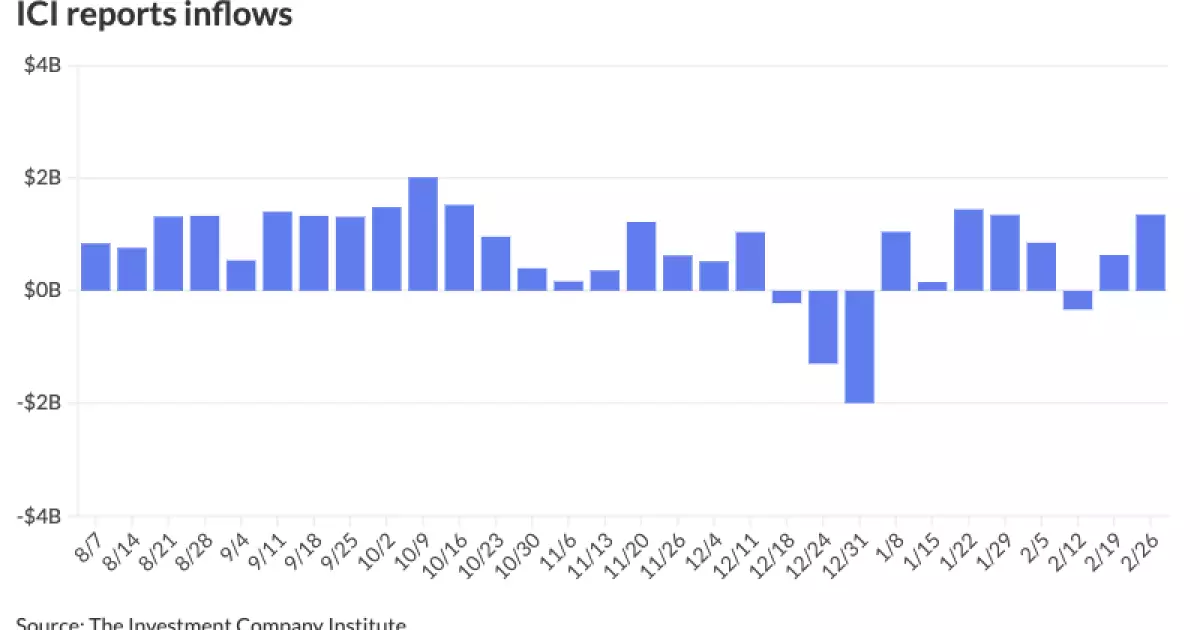The municipal bond market has long been a bastion of stability within the tumultuous waters of the financial world. As observed recently, the performance of municipals has been notably steady, albeit slightly weaker against rising yields in U.S. Treasuries and an uptick in equities. Such shifts suggest a complex interplay of investor sentiment and market fundamentals amidst a backdrop of fluctuating economic conditions. Simultaneously, a shift in government policies and fiscal strategies raises pressing questions about the long-term sustainability of municipal debt.
In February alone, municipals experienced a surprising gain of 0.99%. While this figure does reflect a robust month, it’s essential to consider the underlying dynamics contributing to these performances. Daryl Clements, a portfolio manager at AllianceBernstein, describes the impending net supply expected this month at a whopping $7 billion, which may create a headwind for the market. The critical realization here is that while investors are currently enthusiastic about tax-exempt income, they must also grapple with the balancing act of high supply against consistent demand.
Tax Season Blues: A Double-Edged Sword
As tax season approaches, a unique phenomenon manifests: investors may withdraw cash from their portfolios to meet tax obligations. Clements hints at a potential selling pressure that could weigh upon the municipal bond space at a time when stability is crucial. Yet, it’s equally pertinent to recognize that this typical seasonal trend could be counterbalanced by robust inflows fueled by investor demand for tax-exempt income. This duality of behavior exemplifies the intricate nature of market sentiment.
The Investment Company Institute recently reported that investors have added approximately $6.178 billion to the municipal market year-to-date. Such vigorous activity signals that, despite short-term pressures from tax-induced withdrawals, long-term demand for municipal bonds remains intact. It raises the question: Can this demand remain resilient against the deteriorating effects of heightened supply?
Structural Challenges Awaiting Solutions
While the municipal market boasts healthy net inflows, it’s faced with structural challenges that cannot be ignored. Most alarmingly, there’s an acknowledgment from experts that the market may need upwards of $750 billion to $1 trillion annually to adequately address pressing infrastructure issues. The current issuance of debt, although strong at $70.4 billion year-to-date, does not come close to meeting this looming financial crisis. In this light, the municipal bond market appears ‘structurally undersupplied’.
Wesley Pate’s insights reinforce the notion that even a doubling of last year’s issuance record of over $500 billion might not satiate the market’s hunger. The proposed expansion of supply could diversify the buyer base, enabling a more fluid market equilibrium. However, without a restructured approach towards municipal financing, even the most ambitious targets might come up short.
The Inflation Dilemma: What Lies Ahead
Heightened inflation and increased yields in U.S. Treasuries require careful analysis of their implications for the municipal bond market. With 30-year municipal yields hovering around 3.96% and Treasury yields nearing 4.566%, investors face a critical dilemma: weigh the benefits of taxable securities against the allure of traditionally safer municipal bonds. The competition becomes fiercer in environments marked by unpredictable economic shifts.
This uncertainty can cause erratic inflows and pressure the valuations of municipal debt. It’s a critical balancing act that requires nimbler management strategies. The necessity for flexibility is compounded by ongoing inflation concerns, as it can influence how municipalities manage their borrowing and spending habits moving forward.
Future Innovations: A Silver Lining?
Against this backdrop of uncertainty, innovation might provide a flicker of hope. The recent advancement of artificial intelligence and blockchain technology in the fixed-income market could herald a new era of efficiency, transparency, and better pricing structures for municipal bonds. The development of platforms like ficc.ai seeks to democratize access to financial data, thereby reducing the grip of monopolistic pricing, which has often disadvantaged smaller investors and market participants.
Such technological advancements can bolster market participation and drive greater transparency. This innovative approach may empower local governments to issue debt more competitively and efficiently, ultimately allowing for better funding options that address long-term structural challenges.
In essence, the convergence of these factors illustrates a profound insight into the dynamics at play within the municipal bond market. Evaluating the resilience against rising supply levels, macroeconomic influences, and the looming necessity for infrastructure investment reveals a sophisticated landscape that is both promising and fraught with complexity. Investors, analysts, and policymakers alike must navigate these waters thoughtfully to unlock the full potential of the municipal bond market in the coming years.

